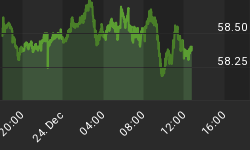You don't have to be Sherlock Holmes to see the signs of a recession bursting through in economic data, particularly in the August Employment Report. One general coincident indicator for a slowing economy is in the decline in tax receipts. Because taxes are based on income, if less income is reported, lower tax revenues are received. Tax receipts are falling for the US Treasury and the for state and local tax authorities.
Other recessionary indicators are popping up everywhere, from a weak transportation industry (if you can't sell it, why ship and stock it), to manufacturing and retailing. All of these industries have begun to institute the usual desperate measures to boost sales. One recent example of this was when Apple cut the price of their iPod by 30 percent because inventory was building up. This move angered many of their loyal customers who stood in line for days so they could be one of the first to purchase one early on, at full price.
Some other methods used lately are by the auto manufacturers who are offering 0 percent financing, again, for 60 months, and by department stores advertising "no payments for a full year on anything bought today". The Target store wants to sell its $7 billion in-house credit portfolio even though past credit increased sales. Why? Because it's likely that many of Target's loans were made to subprime customers and will probably never be paid back. These drastic measures indicate that final demand is very weak, and, without it, there is little incentive to produce. This results in layoffs rather than hiring. A healthy cyclical recovery will only occur when inventory has been cleared out, and wage earners have built up their savings, and have a pent up demand for goods and services.
If you have read your shrunken newspapers lately, you may have noticed that over 150 mortgage companies have either shut down or filed for bankruptcy. Countrywide, as one example, is laying-off 12,000 workers in their first round of job cuts. Unfortunately, many of these laid-off workers will not be able to receive COBRA health benefits because the company they worked for doesn't exist anymore. Inside sources from Wall Street are saying that hedge fund and Wall Street job losses could approach 20 percent.
Real estate agents could really begin to feel the effects of a downturn. The number of agents ballooned over the past few years from 500,000 to over 1,300,000. With new and existing home sales collapsing, many agents are effectively unemployed because they're not earning anything. However, they're not eligible to collect unemployment benefits because they are independent commissioned sales people. Nationwide, the demand for anyone working in the housing sector (including mortgage bankers, construction workers, and building suppliers) will slow down considerably and result in many big drops in the employment numbers in the months ahead.
Finally, the smoking gun for a slowing economy is really reflected in the employment numbers. The Bureau of Labor Statistics ("BLS") household survey showed a drop of 360,000 jobs in the September report for August. The unemployment rate would have gone up except for the fact that an equal number of potential workers gave up looking for work and dropped out of the labor force; a clear sign they knew there were no jobs for them. Reinforcing this view is the fact that employment for temporary workers has turned down. Temporary workers, not surprisingly, are the first to be hired when the economy picks up, and the first to be let go as production is cut back.
The BLS is mindful of how politically sensitive any reported job data is to the White House, so there is a strong bias for the government bureaucrats to publish a favorable jobs report. Job growth is currently facilitated by using a computer model, the BLS Birth Death model, to estimate jobs that have been created but are not counted in the payroll survey. The computerized-created jobs are then added to the total jobs number before seasonal adjustment.
The effect of the model is, of course, perverse. Such models just blindly project the past into the future. Take a look at the table below:
| February to August 2007 | |||
| Month | Jobs created by BLS Birth Death Computer Model | Payroll Job Growth Reported by BLS | Job Growth without adding computer modeled Estimates |
| February | 118,000 | 90,000 | -28,000 |
| March | 128,000 | 175,000 | 53,000 |
| April | 317,000 | 122,000 | -195,000 |
| May | 203,000 | 188,000 | -15,000 |
| June | 156,000 | 69,000 | -87,000 |
| July | 26,000 | 68,000 | 42,000 |
| August | 120,000 | -4,000 | -124,000 |
| Total | 1,068,000 | 708,000 | -360,000 |
Without the Birth Death model, the BLS would have reported 124,000 job losses (not 4,000 losses) in the August employment report. Since February, there has very likely been a drop in employment (due to the effects of the housing and mortgage mess) not job growth of over 700,000. That's why we are convinced the recession is already here!
















